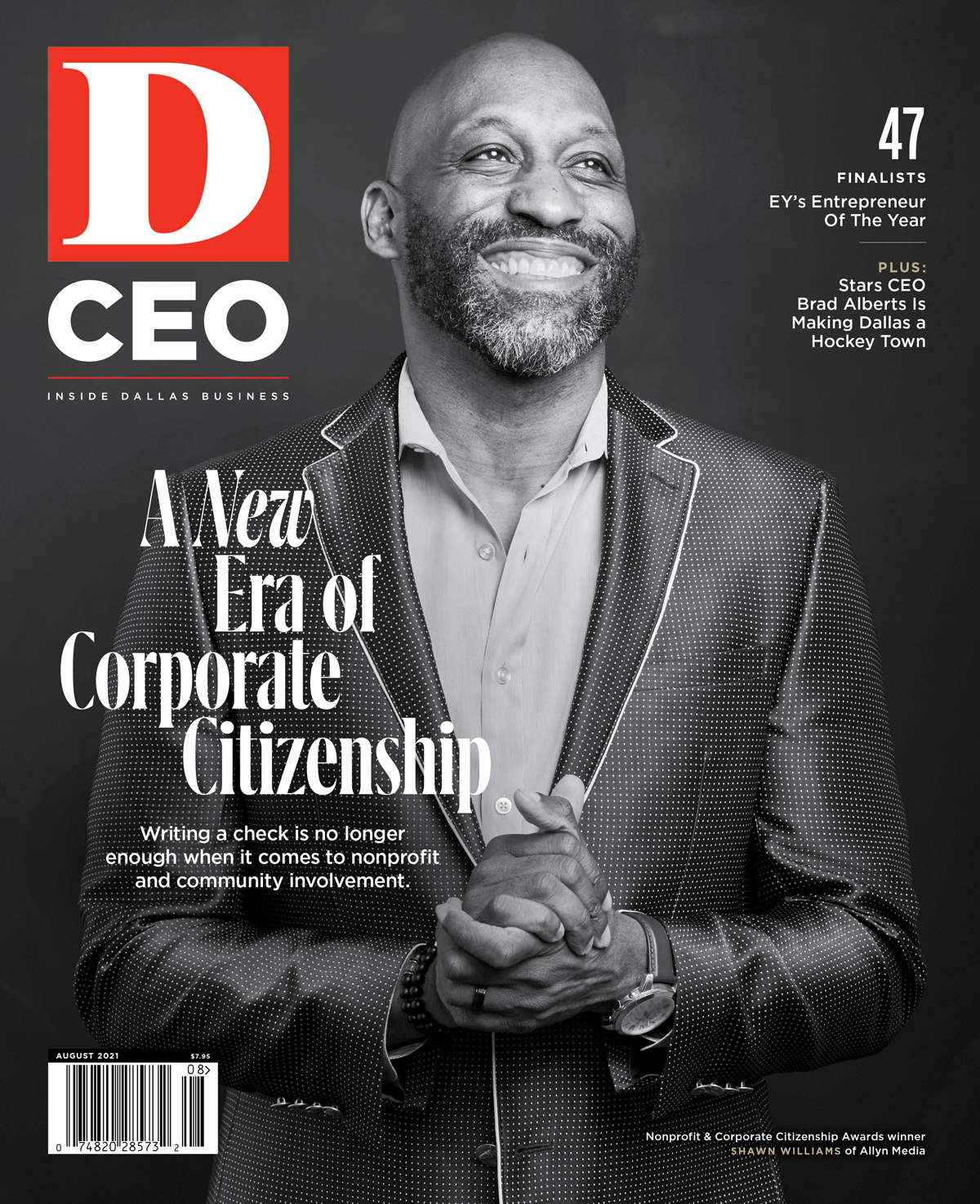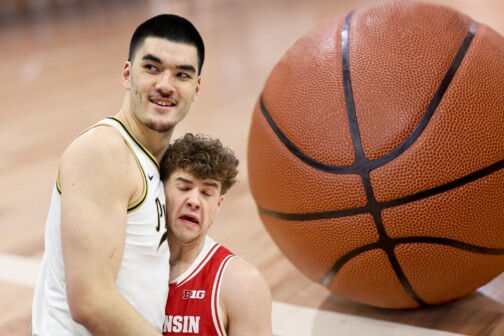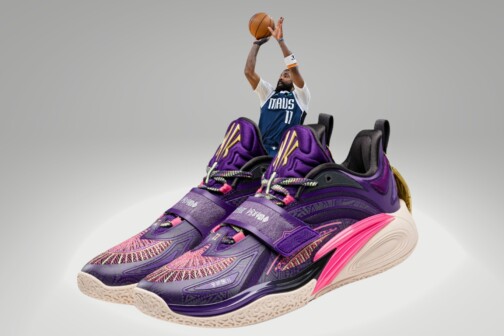It was July 2020, and the National Hockey League, like all sports leagues, had abruptly halted its season. No one knew how long the COVID-19 pandemic would last or how hard it would hit professional sports. It was during these uncertain days that the Stars announced that longtime CEO Jim Lites was stepping down and that Alberts, 51, would step up.
It was the culmination of a 26-year career in professional sports, most of it with the Dallas Stars. He had risen from an entry-level sales position with the organization to become president, overseeing the business end of the franchise. But with the world locked down and all sports and entertainment events canceled, Alberts was a sales guru leading an organization that no longer had a product to sell. Instead, as soon as CEO was added to his title, he faced the worst part of the job. The Stars furloughed about half of its 900-plus employees, and the remaining staff took a pay cut.
The NHL started up again weeks later, but with the entire league sealed off in “bubbles” in Edmonton and Toronto. The Stars made an incredible run to the Stanley Cup Finals—the kind of performance that should have brought in millions of dollars in revenue. However, without seats to sell to fans, the Stars were leaking money. “Losing out last year on all the playoff revenue that we could have made going to finals was a kick in the you-know-what,” Alberts says.
It wasn’t the first time he faced adversity with the Stars. He rose through the organization in the 1990s as the franchise moved from hockey-mad Minnesota to football-crazed Texas in 1993. The Stars surprised the NHL by establishing a rabid fanbase in an unproven southern market and winning a Stanley Cup in 1999. After stepping away for a few years to grow Legends Hospitality, Alberts returned to the Stars in 2011 to help rebuild the team’s core business, which had been gutted by a devastating bankruptcy. Now, with fans trickling back into stadiums as the world emerges from a COVID-19-induced hibernation, a question looms over the Stars’ new CEO: Can he lead yet another comeback?
Basketball was Brad Alberts’ first love when he was growing up in small-town Wisconsin. Alberts played at tiny Ripon College in Wisconsin, where he set an all-time school scoring record. He studied sports administration at the University of Northern Colorado before following his girlfriend Kate, now his wife, to Dallas. At the Byron Nelson PGA golf tournament in 1995, one of Kate’s work colleagues suggested that if Alberts wanted to break into professional sports, he might try looking at the Dallas Stars, a brand-new franchise flying below the city’s radar.
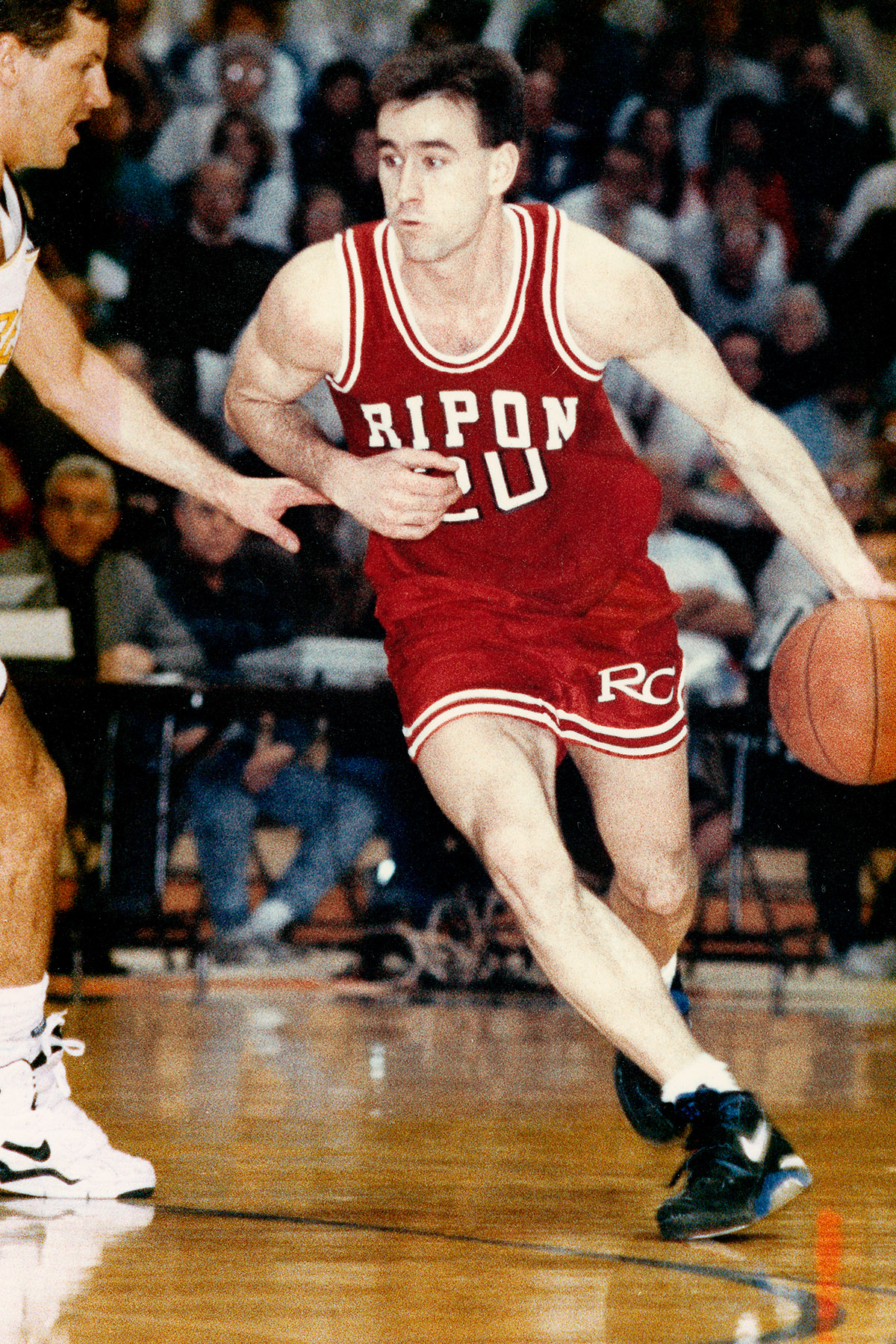
Alberts got an entry-level job selling tickets over the phone, making $12,000 a year. The Stars were a hard sell, but the lanky Midwesterner had an affable, easy way about him that endeared him to clients and managers. Jim Lites, then team president, quickly spotted Alberts’ talent. “He’s articulate; he has a really nice way about him,” Lites says. “He’s good with people, he is a good listener, and has an engaging personality—and those are all traits he’s had since he was in his 20s.”
Alberts quickly moved up within the organization, eventually selling executive suites and corporate sponsorships. Doing so became a lot easier after 1999 when the team won its first Stanley Cup behind a roster of recognizable, charismatic superstars—Mike Modano, Brett Hull, Sergei Zubov, and Ed Belfour. A year prior, team owner Tom Hicks had purchased the Texas Rangers. That created new opportunities for Alberts, who also began selling corporate sponsorships for the baseball franchise. When he saw that the two Hicks-owned teams were competing for the same corporate sponsors in the local marketplace, he suggested they combine forces. He helped Lites launch Hicks Sports Marketing Group to sell corporate sponsorships and advertising across all of Hicks’ franchises, which eventually also included Liverpool Football Club.
In 2001, the hockey team moved into its new home at American Airlines Center and began selling out nearly every game. After the lockout of 2004–2005, the Stars strung together a series of winning seasons, making the playoffs for three consecutive years and going all the way to the Western Conference Finals in 2008. Revenue was solid and corporate engagement high. But the 2008 recession hit Hicks hard. The ownership started defaulting on loans, and the Stars began a slow, agonizing slide toward bankruptcy. In 2009, Hicks dissolved Hicks Marketing Group. Like much of the franchise’s leadership, Alberts started looking for new opportunities.
A year earlier, Dallas Cowboys owner Jerry Jones and New York Yankees owner George Steinbrenner joined forces to create Legends Hospitality, a company that would oversee the two massive franchises’ merchandising, advertising, and stadium operations. Alberts moved to Legends as vice president of sponsorship and sales. He had weathered the storm of the Hicks bankruptcy. Legends would become a major sports brand with a global reach, and Alberts got in on the ground floor.
A couple of years into his stint with Legends, Alberts received a call from Jim Lites. A Canadian hotel developer named Tom Gaglardi was in the process of buying the Stars out of bankruptcy, and he recruited Lites to come back and lead the rebuild. Lites was trying to put the old band back together, and he wanted to know if Alberts was in. He wasn’t sure. “It was not an easy decision; I agonized over it,” Alberts says. “I was in a good spot [with Legends].”
When Alberts and Lites met to go over the financials, the prospect proved even more daunting. The numbers did not look good. Ticket revenue had collapsed. Advertising had dried up. And even though the Stars had always had great relationships with supportive local corporate sponsors, that had taken a hit during the bankruptcy, too. “I looked at the numbers, and I was like, ‘Oh my goodness,’” Alberts says. “I kind of gagged.”
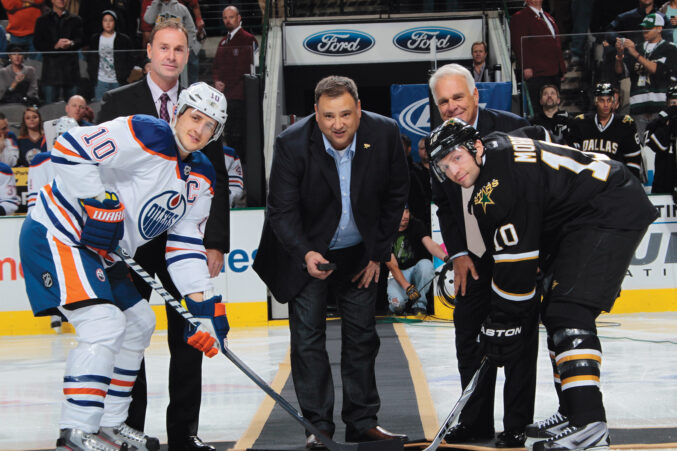
But what Lites offered Alberts was something he didn’t have at Legends: a chance to be part of a professional sports team again. Alberts couldn’t resist. “At the end of the day, that’s why I came back,” he says. “But it wasn’t easy. I knew how hard it was going to be, and I was not wrong.”
Lites brought in Jim Nill as general manager. Nill helped put together four Stanley Cup championship teams with the Detroit Red Wings. The Stars had a young star in Jamie Benn, whom Lites and Nill were confident could lead a team to the Cup. But the product on the ice is only half of the equation in a successful sports franchise. It was on Alberts to right the financial ship: sell tickets, fill suites, and get the community excited again about the Dallas Stars. Alberts began by reestablishing relationships with corporate sponsors. The Stars created an advisory board populated with prominent local business leaders to help solidify those relationships. Matt Bowman from the Oklahoma City Thunder was hired to rebuild the ticket sales department.
During the bankruptcy years, the Stars had all but disappeared from the city’s radar. It didn’t help that during that time, the Dallas Mavericks won the NBA Finals and, with the Cowboys, took up most of the city’s sporting attention. It was slow, grinding work. “Not only myself, but a number of people here have put their life into this,” Alberts says. “It has been my greatest professional challenge by far.”
Over the course of three or four years, the Stars brought revenue back to pre-bankruptcy levels. Alberts began to strategize a way to capture the team’s resurgence. In 2014, the Stars retired Modano’s jersey during a sold-out game. There was a huge outpouring of affection for the forward who helped lead the Dallas team to their first Stanley Cup. The night was about more than honoring a fan favorite and a franchise hero, Alberts says: “We returned to our roots.”
When the Dallas Stars franchise moved from Minnesota to Dallas in 1993, the NHL wasn’t sure if the sport would take root in a warm, southern U.S. city. But the team proved over nearly three decades that it could grow the sport in Texas. The Stars built new ice rinks and established youth leagues to help cultivate a future fanbase. By the end of the 2010s, Alberts wanted to demonstrate to the NHL that Dallas was more than an expansion success story. “We had turned the corner, but I knew that I needed to make us big,” he says. “We’re in Dallas, Texas. Everything we do here has to be large, and we needed to be not just another team in the league. In order to do that, we needed to be able to host the game’s greatest events.”
Tom Gaglardi calls Alberts a modern leader who understands what really matters.
Winning another Stanley Cup was on Lites and Nill’s agenda. But there was a big event that Alberts had set his eyes on—the Winter Classic, an outdoor hockey game played each year on New Year’s Day. Established in 2008, it has become a league centerpiece, as much an annual celebration of hockey and all its history and tradition as it is another regular-season matchup. Since its founding, the game has been played in traditional hockey markets. The Chicago Blackhawks, for example, have played in more Winter Classics than any other team, followed by the Boston Bruins. But Alberts began to wonder: Why couldn’t the outdoor game be played in Dallas?
Of course, the prospect of an outdoor hockey game in Texas presented challenges. First, there was the weather. The technology existed to freeze an outdoor rink in Dallas, but the bright Texas sun, an unseasonably warm January day, or a rain shower could turn it to slush. The league, however, was more concerned about local interest. The Winter Classic was the NHL’s marquee event, and if Dallas couldn’t prove that it could generate enough enthusiasm around the game to fill a venue to capacity, it would be an embarrassment to the league. Alberts did not share those concerns. “The league was worried about us not being able to sell 85,000 tickets,” he says. “I wasn’t. I thought we could.”
Alberts began scouting for a venue and quickly targeted the Cotton Bowl. It was a historic venue in Dallas proper. It was also very big. In 2018, Dallas hosted the NHL Draft, and Alberts used the opportunity to pitch the idea to the league’s top officials. He toured them through Fair Park and walked them through his vision for a Cotton Bowl Winter Classic in 2020. They were impressed enough to recommend the location to the league commissioner. A month later, Alberts met with NHL Commissioner Gary Bettman and finalized the deal. The commissioner had some pointed advice for Alberts, telling him, “Brad, don’t f*ck this up.”
One of the first things the Stars did to promote the game was launch a website so fans could register for a chance to win free tickets to the game. The contest, Alberts admits, was a way to gauge early interest. More than 60,000 people entered. When tickets finally went on sale, they quickly sold out.
The Stars then expanded capacity at the Cotton Bowl and sold more tickets. Still, in the days leading up to the event, Alberts had knots in his stomach. There were so many things that could go wrong. The weather might not cooperate. Ticket holders may not show up. But on New Year’s Day, Alberts woke up to a beautifully cold, overcast day. He headed to Fair Park. Around 8:30 a.m., he drove past the DART station at the entrance to the fairgrounds and saw crowds already lining up.

The game drew 85,630 fans—the second-highest attendance in NHL history. The Cotton Bowl was electric, and the Stars delivered a thrilling performance, beating the Nashville Predators 4-2. But for Alberts, that day was about much more than who won a hockey game. “We proved that this is a franchise that can execute at the highest level,” he says. “I think we’ve proven to everybody, not only with what we’ve done with growing the sport but how we operate our business, that we’re certainly one of the sport’s elite teams.”
By the summer of 2020, those screaming fans at the Cotton Bowl felt like a distant dream. Like the rest of the world, the new CEO of the Dallas Stars was working from home, trying to figure out how to run a hockey team that couldn’t play in front of an audience. As the season picked back up inside the NHL’s bubble, the Stars sold some merchandise. When Texas began to allow limited attendance at indoor events, the team opened American Airlines Center for playoff watch parties on the arena’s big screen.
Without games to sell, Alberts began thinking about how to energize other aspects of their business. One focus became the Dallas Stars Foundation, which is headed up by fan-favorite Marty Turco, an All-Star goalie and Alberts’ frequent golf partner. Under Turco, the foundation had become an ambassador of hockey to new communities, with a particular focus on increasing participation in the sport for women and people of color. This kind of hockey evangelization has become embedded in the franchise’s DNA. The Stars now operate 16 ice rinks throughout North Texas and run youth hockey programs serving more than 15,000 children. Turco says his friend takes time to listen and learn, but that he’s not afraid to make decisions. “His leadership style is all-inclusive, but direct, too,” Turco says. “He knows that the buck stops with him—especially now.”
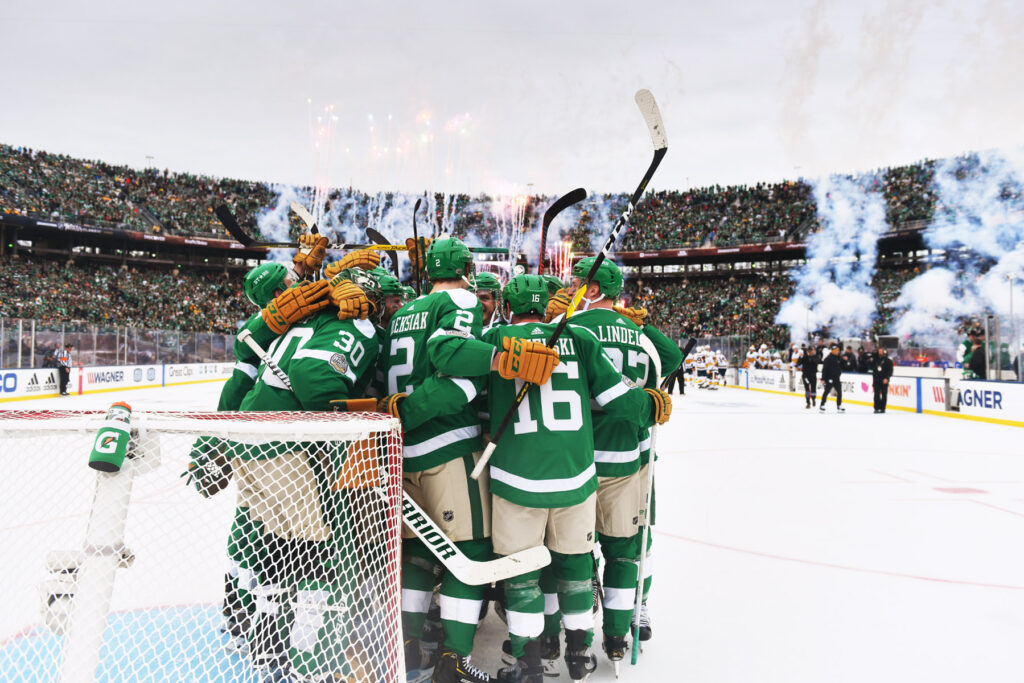
As Texas began opening up ahead of the rest of the country, Alberts focused on jump-starting the youth leagues. Following CDC safety protocols and establishing new cleaning and air-filtration practices in the facilities, the team enrolled youth players. Interest surged—and not just from local kids. Youth leagues around the country that couldn’t reopen began looking to relocate to places they could play. The Dallas Stars had the rinks and infrastructure to welcome them with open arms. Youth tournaments from as far afield as Michigan headed to North Texas. In February, the Stars snagged its biggest tournament relocation: the 2021 IIHF Under-18 Men’s World Championship.
The NHL eventually did come back. When I met Alberts at the Stars’ headquarters in Frisco in May, the team was entering the last week of the league’s shortened 2020–2021 season. Most furloughed employees had returned, and operations were showing signs that they would eventually normalize. But the Stars were on the precipice of missing out on the playoffs altogether, thanks to a slew of bad injuries. That meant missing out, once again, on millions in potential playoff revenue. And yet, Alberts appeared unfazed. As we talked, he looked out the window of his office, which has a view onto one of the Stars’ practice rinks. “We could easily build another rink in Frisco, and it would be full today,” Alberts says. “Our numbers in youth hockey are fantastic and growing.”
The Stars CEO began his career at a time when the franchise knew that to make it in Texas, it would have to do more than win Stanley Cups. The Stars built rinks, established youth leagues, and developed relationships with the community. Many of the fans who filled the Cotton Bowl for the Winter Classic last year were kids who were playing in those youth leagues in the 1990s when Alberts was selling tickets. Now, he is charting a way out of the pandemic by doubling down on those outreach efforts.
Gaglardi is confident that Alberts is the right man for the job. “Brad is well-trained,” he says. “He has been around some of the best people in sports and has a good understanding of what really matters. I’d also call him a modern leader. He’s got the toolbox to work in modern times … that ability to bridge the old to the modern.”
Although his first year as CEO was undoubtedly difficult, Alberts is bullish on the organization’s future. The Stars will win games again; the AAC will fill up. But the pandemic has served as a reminder that the team’s success has always been about more than just the performance of its hockey team. “We’re not just sitting here, waiting for our team to be good,” Alberts says. “This is turning into a hockey market. We are going to have hockey events in Dallas all the time, whether they’re youth, whether they’re college, and whether they’re the highest level of professional hockey. This city is going to be looked at as a place that plays hockey.”
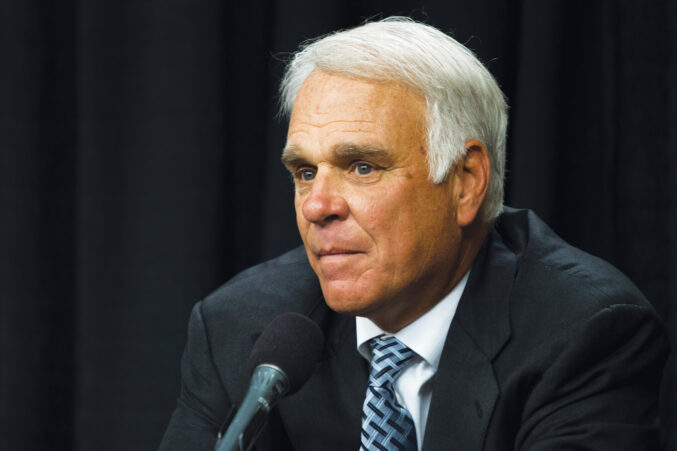
A New Role for the Former CEO
Jim Lites
A lawyer and University of Michigan grad, he’s had three stints with the Stars, beginning in 1993. Here’s what’s next for the longtime sports exec.
Jim Lites is quick to clarify he isn’t leaving the Dallas Stars. Although Brad Alberts has taken over as chief executive, Lites remains involved as chairman, advising on both team operations and development opportunities at American Airlines Center. In early 2020, Stars’ owner Tom Gaglardi purchased two of the last undeveloped lots adjacent to the arena. The long-term goal for the parcels, Lites says, is to develop new commercial, residential, or hotel properties that are incorporated into the design of a renovated arena. COVID has thrown some of those plans into limbo, but Lites is confident that the Stars and Mavericks will eventually settle on a plan to renovate the AAC. “A lot of that will depend on what happens in the arena business,” Lites says. In the meantime, Lites is also staying busy with a new venture, Victory Acquisition Corp., which he founded with oil and gas executive Billy Quinn. Their partners include some big names in sports and entertainment—such as Roger Staubach and former Van Halen frontman Sammy Hagar. Lites says the firm has its eye on acquiring companies in the sports broadcasting industry as new streaming services emerge.
Get the ItList Newsletter
Author




